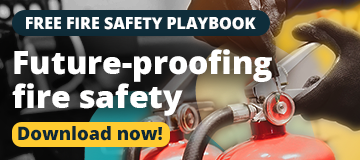
Best practice within Joblogic workflows: more than just good habits
When Joblogic talks about “best practice,” we mean more than simply working efficiently or reducing paperwork. We mean building smart, scalable habits that are embedded into the way your team operates. But there’s a critical distinction to make here: best practice doesn’t live solely in how your team works; it also lives in how you use the software itself.
At Joblogic, we see best practice in two layers.
Layer one: Workflow-level best practice
This is about the operational behaviours and habits that successful service businesses rely on. These are principles that drive consistency, visibility and performance across the entire job lifecycle. Examples include:
-
Logging asset history clearly on every visit
-
Treating compliance as part of the job workflow, not a separate task or afterthought
-
Taking structured photos and notes to reduce disputes
-
Reducing duplication and manual entry wherever possible
-
Ensuring tight handovers between field and office
These behaviours make a difference. They save time, build trust with customers and reduce operational risk. But on their own, they can only go so far. That’s where the second layer comes in.
Layer two: Software-embedded best practice
This is about how Joblogic’s platform is used to enforce, automate and amplify those good habits. Every major workflow in Joblogic, from quoting to compliance, job management to invoicing, has built-in tools designed to support best practice. But they only work if you use them intentionally.
Let’s break it down using a key example: RAMS and compliance.
RAMS: embedding safety and structure by design
Risk Assessments and Method Statements (RAMS) are more than documents. They are a key part of demonstrating competence, reducing liability and protecting your workforce. But too often, they are treated as a bolt-on or an end-of-job tick-box exercise, something created in Word, printed out and left in a van.
Best practice means bringing RAMS into the heart of the workflow. Here’s how Joblogic helps you do that.
1. Assign RAMS at job type level
From the moment a job is created, the correct RAMS documentation should be linked based on job type or service category. This ensures:
-
Relevant documents are surfaced automatically
-
No RAMS step is missed before work starts
-
The office doesn’t have to manually track compliance steps
2. Use templates for consistency and speed
Joblogic allows you to build RAMS templates for repeatable job types. These include:
-
Standard risks and mitigation strategies
-
Method steps for engineers
-
Sign-off fields for digital compliance
No more creating from scratch. Just select, tailor if needed and issue. Done.
3. Embed RAMS into the mobile workflow
Your engineers don’t need another app. They need Joblogic to show them exactly what’s required:
-
RAMS displayed on the job screen before work starts
-
Digital sign-off directly in the app
-
Visibility to the office that the job is safe to proceed
This removes excuses, delays and guesswork.
4. Track RAMS completion as a compliance step
Compliance should never be reactive. With Joblogic, you can track whether RAMS have been viewed and signed:
-
Use dashboards and reports to monitor completion rates
-
Get alerts when RAMS aren’t signed before arrival on site
That means no blind spots and no surprises during audits.
5. Connect RAMS to job closure and invoicing
By integrating RAMS into the full workflow, Joblogic ensures that jobs can’t be closed without RAMS completion:
-
Invoices only go out when compliance is satisfied
-
Your audit trail is complete and credible
This isn’t just about health and safety. It’s about operational integrity.
Why it matters
These aren’t just process tweaks. They are protections for your people, your reputation and your contracts.
RAMS best practice in Joblogic:
-
Removes manual paperwork
-
Ensures field compliance in real time
-
Reduces risk exposure
-
Builds confidence with customers and auditors
And when RAMS are simply part of how jobs flow, not something bolted on, everyone benefits.
Scaling through safety and structure
As your business grows, the cost of non-compliance grows too. Manual RAMS processes simply won’t scale. But structured, embedded, software-led RAMS workflows will, beautifully.
That’s what best practice means at this level: safer engineers, better visibility, zero compliance guesswork, and faster, cleaner handovers.
Ultimately, it’s about a business that runs smarter, scales faster and delivers safely every time.
Final thought
It’s one thing to tell your team to “work smarter.”
It’s another to build a system that makes it easier to do so.
At Joblogic, we design software workflows around industry best practice and then show your teams how to bring them to life.
Because best practice isn’t a concept. It’s a daily habit, powered by the right tools and supported by the right people. That’s why we believe in a Service as Software approach.
Want to see what that looks like in your RAMS and compliance workflows? Let’s have that conversation.

Book your free demo today!
Speak to our product expert to see how the Joblogic features fit your business
*No hard sell, no commitment


.png)